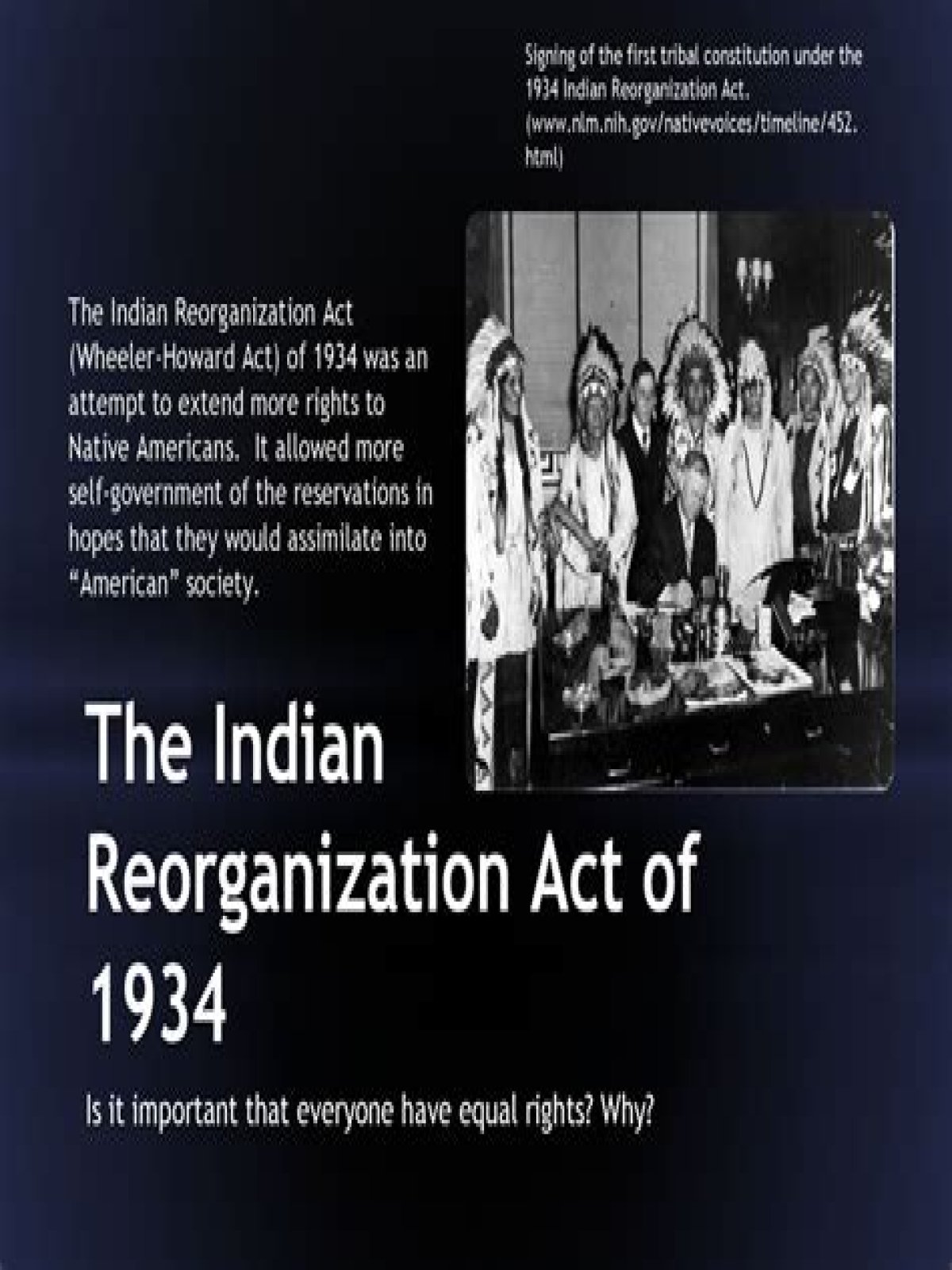Why was the Indian Reorganization Act a pivotal moment in US history?
Correspondingly, what is the significance of the Indian Reorganization Act?
An Act to conserve and develop Indian lands and resources; to extend to Indians the right to form business and, other organizations; to establish a credit system for Indians; to grant certain rights of home rule to Indians; to provide for vocational education for Indians; and for other purposes.
Beside above, what did the Dawes Act do? Approved on February 8, 1887, "An Act to Provide for the Allotment of Lands in Severalty to Indians on the Various Reservations," known as the Dawes Act, emphasized severalty, the treatment of Native Americans as individuals rather than as members of tribes.
Also asked, who promoted the Indian Reorganization Act of 1934 and what did it do?
1934: President Franklin Roosevelt signs the Indian Reorganization Act. President Franklin Roosevelt signs the Wheeler-Howard Act, better known as the Indian Reorganization Act, which pushes tribal governments to adopt U.S.–style governance.
What did the Bureau of Indian Affairs do in the 1930s?
The Bureau of Indian Affairs' mission is to enhance the quality of life, to promote economic opportunity, and to carry out the responsibility to protect and improve the trust assets of American Indians, Indian tribes and Alaska Natives.
What were the effects of the Indian Reorganization Act?
What were the goals of the Indian Reorganization Act?
When was the Indian Reorganization Act repealed?
What was the main purpose of the Indian Removal Act of 1830?
When was the Dawes Act abolished?
| Effective | February 8, 1887 |
| Citations | |
|---|---|
| Public law | Pub.L. 49–105 |
| Statutes at Large | 24 Stat. 388 |
| Codification | |
